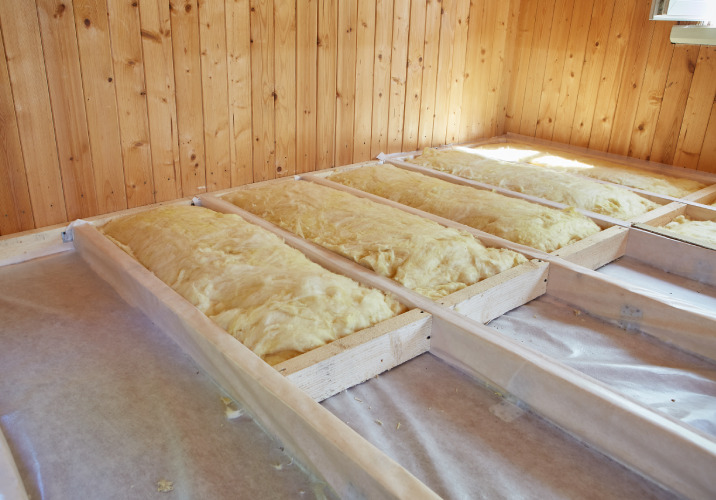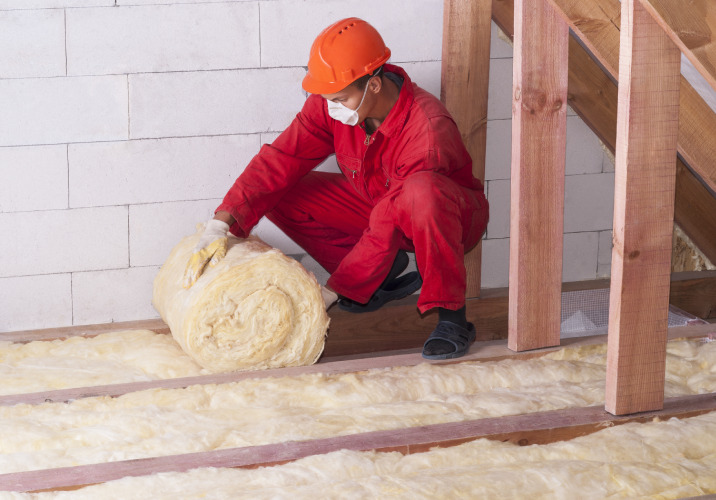
Find a local insulation expert
- Inspiration /
- Indoor projects /
- Walls & flooring /
- How to install...
How to install underfloor insulation
It will save you money in the long run
What is underfloor insulation?
Underfloor insulation is an extra layer added underneath floorboards to prevent hot or cold air from escaping the home. Insulation can come in various different materials, such as polystyrene board, batt insulation and reflective foil.
Benefits of underfloor insulation
Floor insulation has many benefits. The main reasons why homeowners choose to install insulation in floors include:
Soundproofing
Your flooring can allow sounds and reverberations to filter through. With an insulating barrier between floorboards and the outside, the acoustics of vibration and sound waves is limited, resulting in a quieter environment.
Energy-efficient
By insulating your floors and ceilings, energy savings of up to 45% is possible. Whether you have hardwood floors with joists or a concrete slab, your floors are responsible for a considerable amount of heat loss.
Saves you money in the long run
Underfloor insulation will keep your home warmer in the winter and cool in the summer. The need to use heating and air conditioning will be significantly reduced, which will save you money when it comes to your energy bills. Even though underfloor insulation costs money to install, it should pay off in the long run when you spend less on heating and cooling.
Easy to install
There is not a lot of complicated installation requirements that comes with under house insulation. Fitting insulation between floor joints can be a simple procedure. Different types of insulation include:
- Fibreglass/wool batts
- Rock wool batts
- Polyurethane foam
- Polystyrene panels

When can a home’s floors be insulated?
A home’s floors can be insulated any time, provided there is enough crawl space to access under the home. However, it is much easier to have this work done during a home’s initial construction.
Retrofitting
Retrofitting is the process of installing insulation to an already existing home. If your home has joist and stump floors, insulation is made to fit within the wooden slats. However, if your home sits on a slab, an experienced contractor in insulation installation is recommended. An expert will be required to assess whether there is enough space to go in and install the insulation.
During initial construction
Fitting underfloor insulation is easiest when the home is being constructed. Rigid foam insulation can be glued or fitted between wood sleepers and can also be done on top of finished concrete. Some homeowners incorporate radiant heating coils. A general contractor often has the means to place the installation while installing the floors.
Contact local insulation experts
How to install underfloor insulation
Install the strapping
Strapping consists of wire fasteners that are secured on floor joists. If using on concrete, plastic strapping is recommended. Wiring wrapped around a nail on both rafters is often used in securing.
Open insulation packets and let it expand
Before fitting insulation pieces between joists, allow them to air out and expand. This will prevent your strapping from being too snug.
Put the insulation in place
Insulation is designed to fit securely between joists to cover any holes or cracks on the surface. Make sure the entire length of the insulation is firmly in place.
What homes would benefit from underfloor insulation?
Homes in colder climates that are prone to heat loss will dramatically benefit from underfloor insulation. Additionally, homes that have a large number of tiled areas will also benefit. Placing insulation under bathroom floor areas can cut your heat loss by up to 40%. Homeowners often take steps to add insulation to ceilings, walls and roof joists, but neglect to realize the heat loss from a floor.
If you are in the process of building your own home in Canberra or elsewhere, underfloor insulation is an important thing to consider. It will be much easier to install before your home is completed. If you are looking to buy a brand new home, make sure this detail has been addressed. You can also use this feature as a bargaining tool in your offer to buy a house.

How to hire an insulation expert
Regardless of an existing house or one that is under construction, hiring an insulation expert is always a good idea. You want your home to be as comfortable as possible. Insulation experts have the education and experience to complete the job correctly. While it is not always required to use an insulation expert, knowing that the work has been done accurately and is guaranteed will give you peace of mind.
Licensing per location
Each state has a required license for building classification. Ensure the professional you hire has the correct licensing to complete the job before you agree to work with them. Other factors to check are:
- Number of years of experience
- References and reviews
- Break down of costs
Not every contractor will have experience in insulation installation. Make sure that your candidate has the background knowledge to do a proper job. An energy assessment can also explain how and why installing insulation under your floor can save money and make you more comfortable. A qualified insulation expert will also be familiar with the building codes in your area and can help to keep you up to code.
How much will your job cost?
The Oneflare Cost Guide Centre is your one-stop shop to help you set your budget; from smaller tasks to larger projects.



